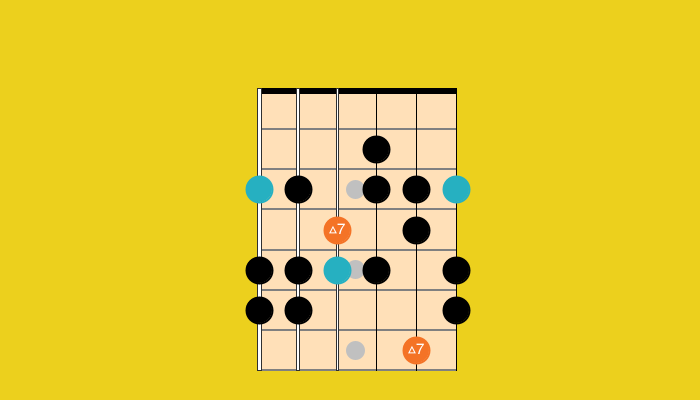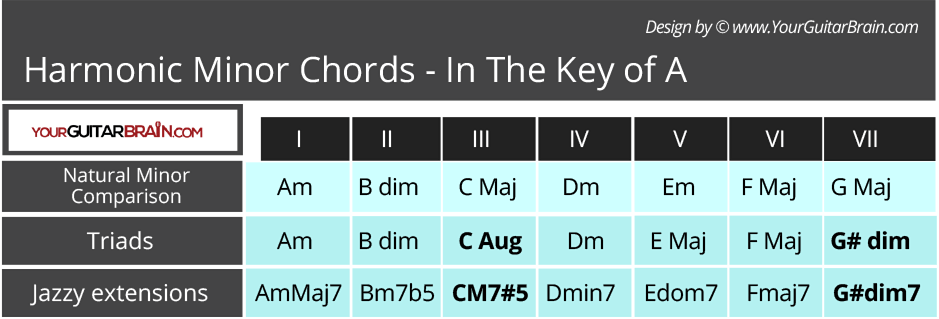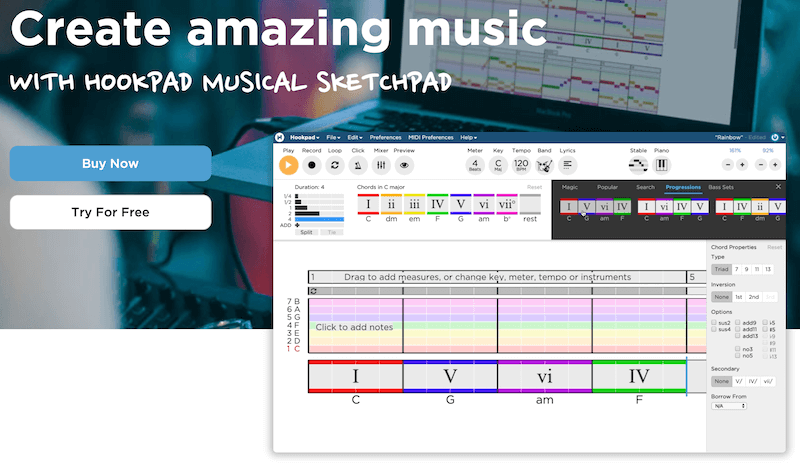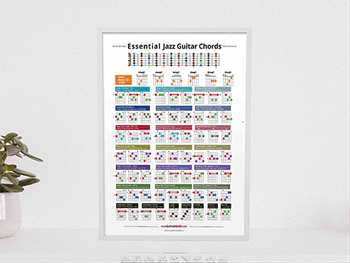Learn the five box position scale shapes that’ll help you build strength, play solos & improvise better on guitar.
What Is The Harmonic Minor Scale on Guitar?
The harmonic minor scale is a 7 note scale derived from the natural minor scale. The only difference between the natural minor scale and harmonic minor scale is the 7th scale note of the harmonic minor is raised by one semitone (half-step).
The harmonic minor scale has a distinctive haunting sound with a spicy Middle-eastern seasoning, thanks to its unique interval structure.
For that reason, it is used in styles such as jazz, Neoclassical, folk, metal, Jewish and Flamenco music. The harmonic minor scale can be used to add spice and interest to your guitar solos and songwriting.
Just like all other musical scales, we use both a scale degree formula and semitone and tone interval formula (half and whole steps) that defines the harmonic minor scale (and thus determines how it sounds):
Harmonic minor scale formula:
1 – 2 – b3 – 4 – 5 – b6 – 7
Harmonic minor interval formula where T = tone and S = Semitone:
T – S – T – T – S – T½ – S
Here’s the formula shown in whole and half steps:
W – H – W – W – H – W½ – H
Pro Tip
Be amazing, love everyone and spThe harmonic minor scale is simply the natural minor scale with a raised 7th note degree. Or, put another way, the major scale with a flat 3rd (b3) and flat 6th (b6).read joy and peace and harmony. This is what life is all about, so keep growing and be abundant and happy.
What Chords Go With Harmonic Minor Scale?
The harmonic minor scale is a versatile scale that can be used over a variety of chords. It is characterized by a raised seventh-scale degree, which gives it a more exotic sound.
Here are some examples of how the harmonic minor scale can be used over different chords:
- Minor chord: The harmonic minor scale can be played over a minor chord to create a sense of tension and resolution. The raised seventh scale degree creates a leading tone that resolves to the tonic, which gives the chord a strong sense of direction.
- Major chord: The harmonic minor scale can also be played over a major chord to create a more exotic sound. The raised seventh scale degree adds a bit of tension to the chord, but it can also be used to create a more dramatic sound.
- Dominant 7th chord: The harmonic minor scale is often used over dominant 7th chords because the raised seventh scale degree creates a leading tone that resolves to the tonic of the scale. This gives the dominant 7th chord a strong sense of direction and makes it sound like it is moving forward.
- Augmented chord: The harmonic minor scale can also be played over augmented chords, but it is not as common. The raised seventh scale degree can add a bit of tension to the chord but can also be used to create a more dissonant sound.
- MinMaj7th chord: The harmonic minor scale can also be played over minMaj7th chords, which are chords that have a major seventh interval and a minor third interval. The raised seventh scale degree can add a bit of tension to the chord but can also be used to create a more complex sound.
Have a look at the table below where the harmonic minor chords are compared to the natural minor scale chords:
Good to Know
The second to last interval distance of a tone and a half is also referred to as either an augmented 2nd or minor 3rd.
Now you know the scale formula for the harmonic minor scale, you can construct and play it in any key you desire on the guitar neck.
But we don’t want to leave you hanging on any longer. Here are 5 CAGED form scale patterns for the harmonic minor scale.
Our example key is G, and the G root note is highlighted in aqua blue in the fretboard diagrams below.
The flat 7th altered scale degree is highlighted in orange, making it stand out as the only difference from the natural minor scale.
Harmonic Minor Scale Pattern #1 – (D Chord Form)
Harmonic Minor Scale Pattern #2 – (C Chord Form)
Harmonic Minor Scale Pattern #3 – (A Chord Form)
Harmonic Minor Scale Pattern #4 – (G Chord Form)
Harmonic Minor Scale Pattern #5 – (E Chord Form)
Practice Tips
- Play the scales starting on the lower root note (aqua blue circle).
- Learn one scale pattern at a time. Only add on the next shape when you’ve memorised and perfected the current one.
- Break the patterns down into single-octave shapes before tackling the full 2 octaves.
- Playing form – spread your fingers out across the fretboard and don’t bunch them up. This will help you develop finger strength and speed, as you won’t be fighting to get into position.
- Timing – always practice your scales with a metronome! Consistent timing is the name of the game. No speeding up and slowing down.
- Picking – play the scales using alternate picking (down to up strokes) to achieve accuracy and control.
- Clean – your main goal, as always, should be to play each note cleanly with no mutes.
- Speed – gradually increase your speed and practice with three tempo variations in mind: slow, moderate and fast.
- Backing tracks – to hear the true flavour of the harmonic scale, practice the shapes over a backing track and get inventive.
Limited-Time Offer! Save 15% on Essential Jazz Guitar Chords Chart Digital Poster
Start learning to play 65 of the most used common jazz (blues, funk and country too) chords + bonus guitar fretboard notes chart fast without waiting for shipping ⇩
Jazz Guitar Chord Shapes Include:
✨ Major seventh (Maj 7th)
✨ Minor seventh
✨ Dominant seventh
✨ Diminished – Half Diminished
✨ Major 9th / minor 9th / dom 9th
✨ Maj11th / minor 11th / dom 11th
✨ Maj13th / minor 13th / dom 13th
and more…
















